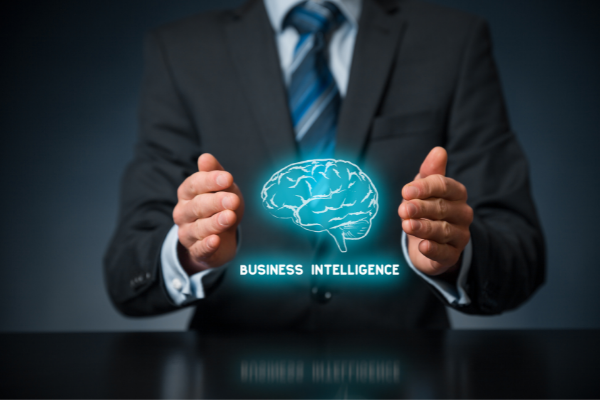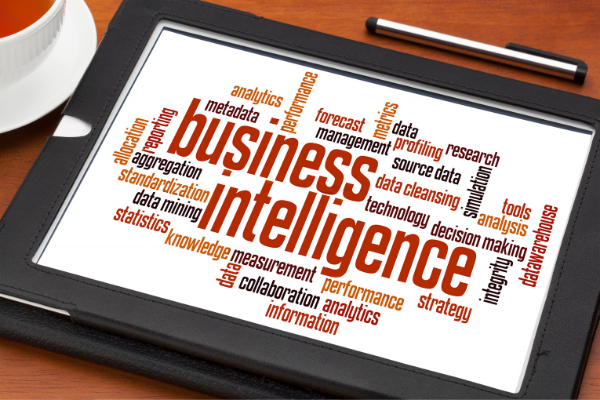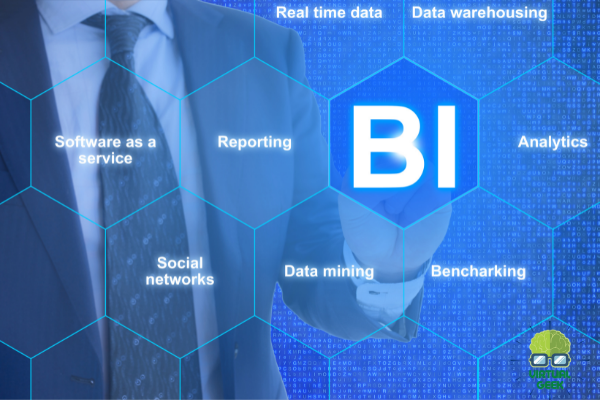Table of Contents
Whether you manage a business or are part of a company, you will have collected and will be collecting significant amounts of information extracted from daily processes: daily sales, regular customers, supplies you have to buy.
1 Introduction to Business Intelligence
In a situation like this, you need a Business Intelligence (BI) solution and this unit will show you what BI is and how it relates to other technology areas and the rest of the organization.
Business Intelligence: Introduction
The motivation for implementing a BI solution is to help the organization make the right decisions, at the strategic, tactical and operational levels. The characteristics that we ask from a BI solution in order for it to fulfill its mission are the following:
- Accuracy
- Timeliness
- Processability
- Provides Value.
There is no BI solution from any vendor that just works for any organization. It is always necessary to analyze the needs of the company and adapt the technologies and applications to these needs.
This is a continuous learning process that can be summarized in the following 4-step cycle:
- Collect Data
- Decisions and Actions
- Measure Results
- Improve.
In addition, implementing a BI solution in the company is a very complicated task, so we start with one department, which allows us to experiment, see what works and what does not and learn from mistakes.

2 User Models in Business Intelligence
In the previous unit we have seen the basics of BI and we have learned that this discipline can collect all the data about our business to process it and get useful results. The question we have to answer now is how to do it?
We need to get the different BI tools to work for us, but first we need to know what they are, what they can do and what they can’t do.
Business Intelligence: User Models
Once we have collected the data and transformed it into a common format, we need to process it so that it returns useful results. This processing starts with query and reporting tasks.
Queries are usually based on a structured language such as SQL, and based on these queries we generate the reports we are interested in by modifying the SQL strings. However, in order to bring BI closer to all types of users, it is necessary that the tools used allow these reports to be generated without the need for programming or SQL language knowledge.
On the other hand, SQL does not adapt to data patterns that we need to analyze from different points of view. In fact, relational databases are not the best way to store this type of data. This is why OLAP and multidimensional analysis techniques have emerged, allowing us to obtain reports much more quickly and accurately.
Whatever the technique used to consult and obtain reports, it is very important to represent these results in a way that is easy to understand and visually attractive. This is the origin of dashboards, which make it possible to customize the information presented to users according to the context in which they are working. These dashboards should present only the information that is essential for the tasks to be performed by the user. This information is collected in the so-called KPIs or key performance factors.
3 Business Intelligence Life Cycle
In the previous two points we have discussed the basics of BI and how workers can use these tools for rapid decision making. We have also seen that BI is not a single application, but a set of tools that work together.
In this unit we will learn how the different tools are combined into a BI solution tailored to the needs of the company and the steps to follow for implementation.
Business Intelligence: Life Cycle
In the vast majority of cases, a BI solution is a set of tools that must work together to meet the needs of the organization. It is usually a complex solution, which requires a planning process to bring the project to fruition.
It will be necessary to select the methodology and tools to be used for the implementation. It will almost always be necessary to customize these tools, since it is very difficult for them to comply with what is expected of them for any type of company.
During the whole process we will have to keep in mind that we need the collaboration of the whole company’s staff, which is not always easy, since people are usually reluctant to change. We have seen in this unit some techniques to overcome this resistance to change.
Once the methodology and tools have been selected, one of the most important questions to answer is whether the architecture will be centralized or distributed. The answer will determine the next steps to be taken, including costs, risks associated with the selected technology and the implementation strategy to be implemented.

4 Business Intelligence Implementation
We already have our planning and roadmap. It is now time to put what we have on paper into practice.
A good business analyst will be needed to manage the requirements elicitation process for the BI project. That means working with the users to find out what they really want, and then analyzing it to find out if it’s what they really need.
With this information we will come up with a reasonable design that fits the business constraints while meeting all the objectives. After this design phase we will move on to deployment followed by maintenance and enhancement of the system we have installed.
Business Intelligence: Implementation
A successful implementation of a BI solution must have a detailed project plan that defines:
- Necessary resources
- Roles to be fulfilled
- Tasks to be carried out
- Possible risks and how to mitigate them.
In addition, this plan must be updated frequently to adapt to new situations that arise in the day-to-day running of the project.
A critical piece of information to make this project plan as accurate as possible is the collection of requirements, both from users and from the business. The use of proven requirements gathering techniques helps us not to forget any requirements that are essential for the users’ work.
With complete and accurate requirements and a detailed plan, we can move on to the design and development phase, where everything planned will become a reality. This development must take the users into account, since the overall success or failure of the project depends to a large extent on their satisfaction.

